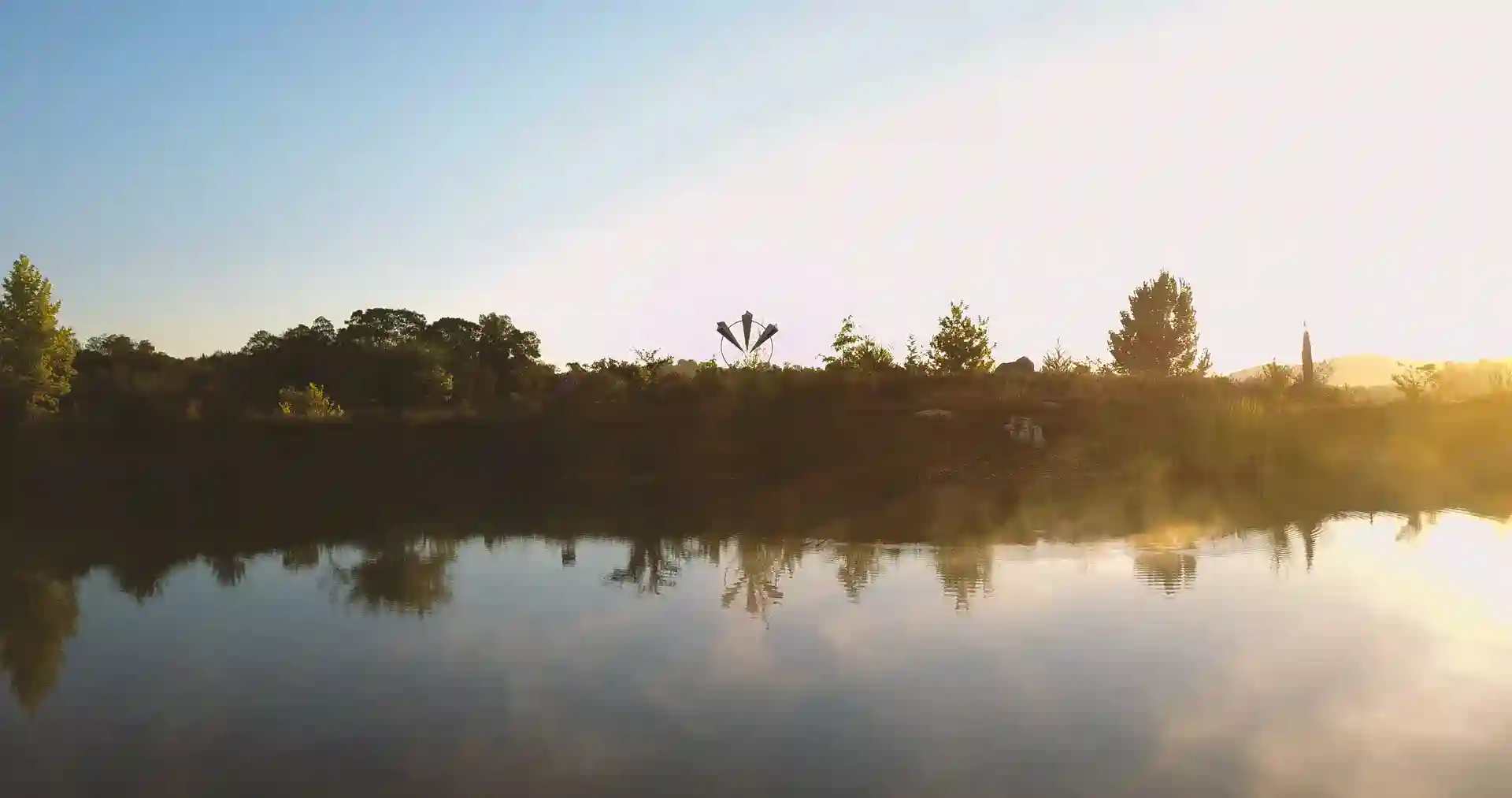“Fontes Vivas”: A Celebration of Living Springs in the County of Odemira
On June 23, 2019, we and various people from our region visited public water springs to clean, decorate and celebrate them – reviving an old Portuguese tradition for St. John’s Day. Such “pilgrimages” took place in the villages of Relíquias, Luzianes-Gare, São Luís, São Martinho das Amoreiras and Vale de Santiago in collaboration with the local councils – an action with potential for the future. In view of the climate and water crises, remembering how to honor and care for natural resources and cycles will become increasingly important in Portugal and around the world.
Barbara Kovats & Martin Winiecki, July 19 2019

In the Christian tradition, June 24 is celebrated as the feast of the birth of John the Baptist – St. John’s Day. This day is closely linked to the summer solstice, which takes place between the 20 and 22 June. In almost all Indigenous (or pagan) traditions, the solstices are celebrated as particularly sacred times in which people consciously connect with the greater cycles and forces of life.
Daniel Balinhas, mayor of Relíquias, says: “As long as one can remember, the people of this region have always visited, decorated and celebrated their springs on St. John’s Day, which was always a public holiday.” This tradition was still alive here, 40 years ago when, as a child, he himself experienced it. He tells how people used to paint the springs with limewash the night before. On June 24, the whole village got up before dawn and made a pilgrimage to the spring. The men and boys carried decorated jugs with two handles (the “male jug”) and women and girls carried jugs with just one handle (the “female jug”).
People decorated the springs with flowers, sung songs, and afterwards shared the food they brought. “That was a good day!”, the villagers who still remember the old times say. Those who had nothing to eat were invited to share the meal, even if they themselves couldn’t contribute anything. And those who had a little more gifted bread and olive oil to the poor.
The springs were not only used for drinking water, but also for watering vegetable fields – with an irrigation system powered by gravity. In the 1970s, when homes got connected to central water pipes and diesel generators were deployed to pump water, people began to neglect the springs. Not only did the springs fall into disuse, but people generally alienated themselves more and more from their original ecological sensitivity, and their awareness of how they rely on water, the Earth, plants and animals. Today, several villages in our region, such as Relíquias, are supplied with drinking water which is piped from 150km away, “cleaned” with chemicals and transported another 30km by lorry to the villages.
The idea for the initiative of “Fontes Vivas” emerged last fall at a networking weekend on the issue of water in Tamera. It was met with a lot of joyful resonance, both from older people who still remember the tradition of St. John’s Day from their childhood and adolescence, and also from younger generations and people who have moved to the region. Groups of committed citizens, associations and local councils in the municipality of Odemira co-organized these actions autonomously. Together, we cleaned and took care of the springs, heard stories about this tradition, sang and learned folk songs that are related to the springs and St. John’s Day and also shared food together.
In Relíquias, we decorated the Atravessado spring with flowers and plants: peppermint, lemon balm, rosemary, lemon verbena, wild mint and carnations. Daniel Balinhas brought maidenhair ferns, adding that this plant is a sign of good water quality. He also showed us a particularly fragrant heritage variety of carnation. He says that, in the past, people grew them in such a way so that they bloomed on St. John’s Day. Isn’t it interesting that, of all things, this flower, which became the symbol of the Portuguese revolution and liberation from fascism in 1974, is so intimately linked to an age-old custom of caring for water?
As we stood at the spring, singing local songs and sharing stories of the local people’s connection to the water, it became abundantly clear that coming together in community to honor water as the source of life is a first tangible answer to the current water crisis. The ever-growing centralization of resources and artificial water management simply compounds people’s disconnection from the sources of life, which is the reason we began to treat water in this way in the first place. Such community actions serve as a reconnection point – both to other humans, to the beings of nature who rely on the same water source as us, and to the Earth herself, who needs all her living systems intact to provide such an abundance of life-sustaining resources.
Moreover, such a simple ritual awakens images of an original, healthy culture. You can almost see how women used to stand in the springs with their jugs, pouring water over men to bless and baptize them. In the so-called pagan tradition, water pouring or immersion in water is a moment of transition from one state of being to another – an initiation into a new phase in life.
In this action, the past meets the future. Daniel Balinhas is sure: next year on June 24, we’ll go back to the spring with more people from the local community and more villages will follow, because “the water is something that concerns and connects us all.”

